Standing as majestic sentinels of nature, California Pine trees are more than just towering behemoths of wood and leaves. They are vibrant ecosystems that support many other lives, are critical contributors to the environment’s health, and are rich with cultural, economic, and symbolic significance.
Within the landscape of California, these trees manifest as diverse species, prominent among which are the Ponderosa Pine, Jeffrey Pine, and the Sugar Pine, each holding unique attributes and distinct features. This journey into the fascinating world of California Pine trees seeks to entertain, inform, and inspire with knowledge about these incredible organisms, their ecological role, the threats they face, and their immense importance to human society.
Table of Contents
- Overview and Species Differentiation of the California Pine Tree
- Ecological Balance Supported by the California Pine Tree
- Challenges, Threats, and Conservation Efforts
- Economic, Cultural, and Symbolic Importance of the California Pine Tree
- Related Content
Overview and Species Differentiation of the California Pine Tree
Exploring the Rich Biodiversity of California’s Pine Trees: Species Analysis and Comparison
California’s extensive tree cover, prominently featuring pine trees, is a testament to the state’s rich biodiversity. The region boasts an impressive 19 pine species, each contributing distinct characteristics to the state’s ecological panoply.
While space constraints preclude a comprehensive textual investigation of each species, this discourse will focus on the predominant species: the Sugar Pine, Ponderosa Pine, Coulter Pine, and Bristlecone Pine.
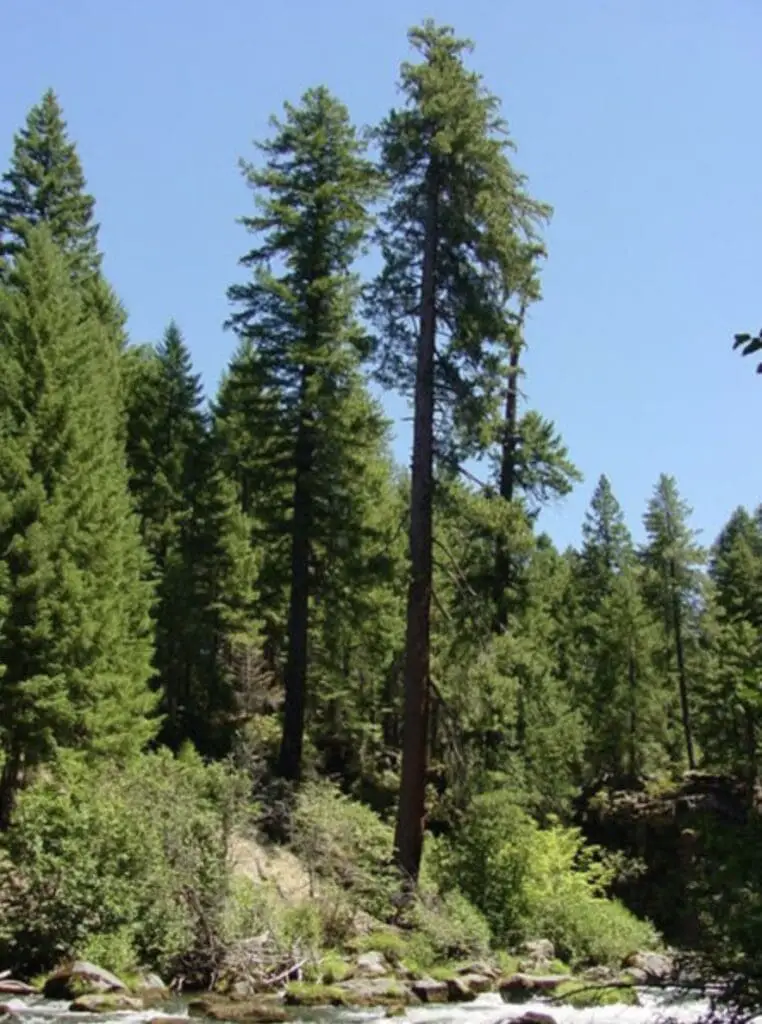
The Sugar Pine (Pinus lambertiana), distinguished by its colossal size, towers monstrously above the forest canopy and is recognizable by its pendulous cones reaching remarkable lengths of up to 24 inches.
Endowed with a capacity to reach over 250 feet in height, the Sugar Pine, often epitomized as “the king of pines,” exhibits smooth, yellow-brown bark. As a prominent producer of commercially valuable wood, this species holds a special place in the California tree pantheon.
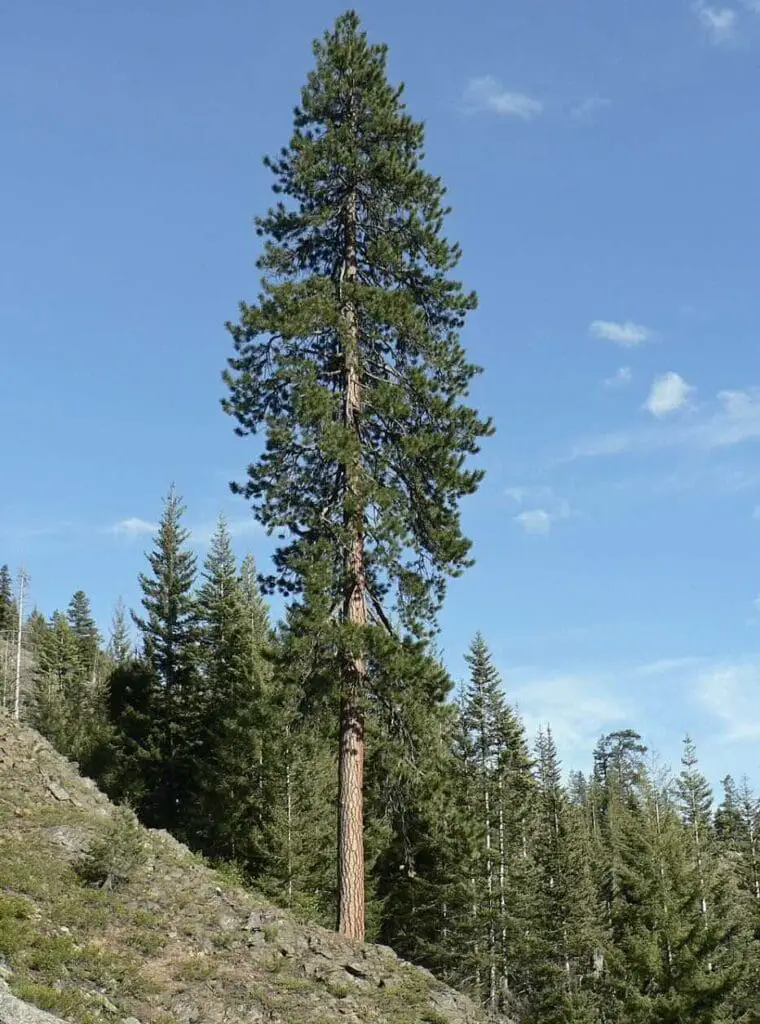
The Ponderosa Pine (Pinus ponderosa), another giant species, is noteworthy for its ubiquity across the western United States. Masterful adaptation to fire-prone regions credits the Ponderosa Pine’s survival to its thick armor-like bark providing excellent insulation against wildfires.
Reaching up to 180 feet in height, the Ponderosa’s bark exhibits an intriguing jigsaw pattern, which, when mature, emanates an enticing odor ascribed to vanilla or butterscotch.
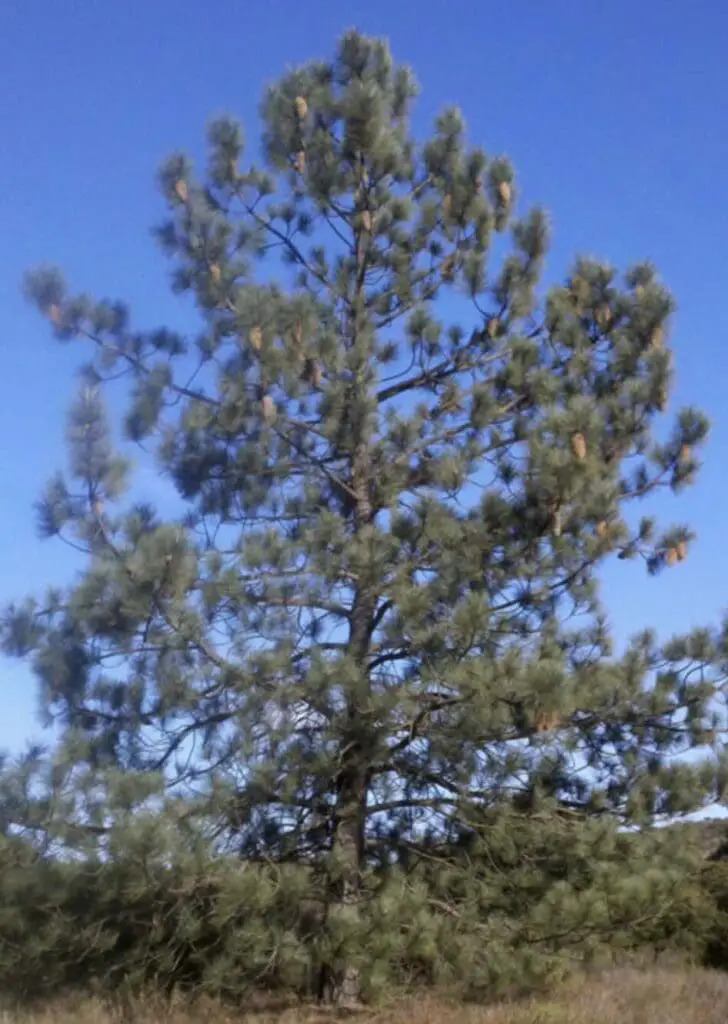
In comparative analysis, the Coulter Pine (Pinus coulteri) falls shorter, with adult trees reaching only up to 80 feet. What this species lacks in height, it compensates with the size of its cones, which bear masses as great as 10 pounds.
Holding the record for heaviest pine cones, the Coulter Pine is fondly called the “widow-maker” due to the potential peril posed by its plummeting pinecones.
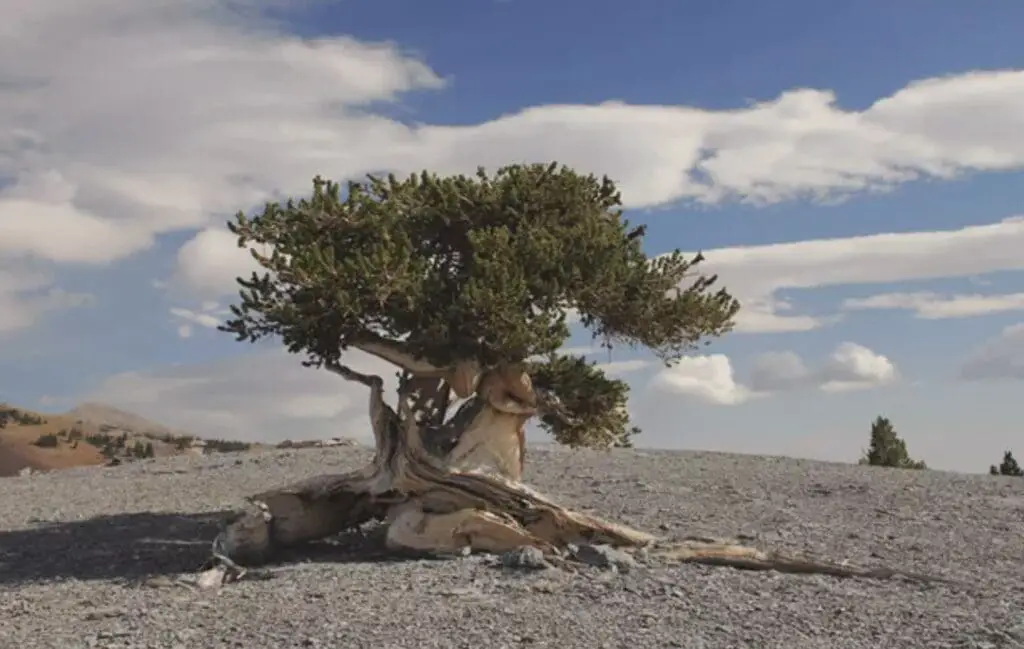
For the Bristlecone Pine (Pinus longaeva), known lesser for its physical attributes, the most intriguing feature lies within its incredible longevity. With some specimens for over 5000 years, this species has been bestowed the moniker “the Methuselah tree.” Hunched, gnarly, and often sparsely needled, these lonesome sentinels of high, arid regions symbolize endurance and survival.
Each pine species contributes uniquely to the rich tapestry of Californian flora, further cementing the state as a veritable hotbed of biodiversity. These trees’ unique attributes underscore how nature’s distinct ecological tools can shape a species to flourish in often harsh circumstances, offering an arresting demonstration of survival and adaptation.
Indeed, studying these magnificent pines prompts a deeper appreciation of Californian ecosystems and an emphatic call for continued research and preservation efforts, ensuring these splendid arboreal wonders flourish in their native habitats.
Ecological Balance Supported by the California Pine Tree
Diving deeper into the ecological impact of California’s pine trees, one swiftly recognizes their essential contribution to the multitudes of terrestrial biomes they inhabit. It is incredibly enlightening to explore how these arboreal marvels sustain ecological balance within their habitats, a facet scarcely brushed upon before.
California Pine trees, by way of their pervasive geographical distribution and robust nature, provide the indispensable biomass that forms the bedrock of countless food chains.
These trees convert sunlight into organic material through photosynthesis by being primary producers, subsequently availing energy to many herbivores and omnivores.
Pine trees contribute to the ecosystem by creating ‘pine forests,’ which predominantly favor animal species like the Yellow-Rumped Warblers and Mountain Bluebirds, who nest in their crevices and feed on their seeds. Predators such as bobcats, martens, and grey foxes also thrive in these habitats, forming the apex of the food chains sustained by the pines.
Furthermore, their leaf litter and fallen logs offer nutrient-rich organic material that accelerates soil formation, contributing to biogeochemical cycles. Pine needles and cones, when broken down by decomposers, offer a steady stream of nutrients, particularly nitrogen and phosphorus, to the forest floor.
Consequently, this augments soil fertility, promoting the growth of herbaceous flora and stimulating biodiversity.
In regards to mitigating climate change, Pine trees present an unheralded frontline. Through photosynthesis, they act as carbon sinks, storing vast amounts of carbon in their wood and leaves, consequently decreasing atmospheric carbon dioxide levels. Recognizing that high levels of carbon dioxide contribute to global warming, the aptitude of these trees to sequester carbon with this efficacy offers a resounding endorsement of their ecological significance.
Additionally, these resilient trees aid in water conservation and management. Their deep root systems aid in water infiltration during precipitation events, reducing soil erosion and promoting groundwater recharge, contributing positively to the hydrological cycle.
In synthesizing these insights, one cannot overstate California pine trees’ indispensable role in maintaining ecological balance. They provide essential sustenance, enhance soil fertility, sequester carbon, and contribute to water conservation.
It is, hence, paramount that commitment to the scientific and conservation efforts regarding these fascinating trees be sustained, focusing on mitigating the impacts of deforestation, disease, and climate change that threaten their existence.
The fruition of such efforts will ensure the survival of these remarkable trees and the sustained integrity of the diverse ecosystems they underpin.
Challenges, Threats, and Conservation Efforts
Among the challenges the admirable California pine trees face are prominent threats primarily emerging from invasive species, climate change alterations, and the pervasive bark beetle.
Addressing these threats involves understanding their multifaceted nature, underlying complexities, and the role of rigorous scientific investigation in devising effective mitigation strategies.
Invasive species pose a significant challenge to the health and survival of California pine trees. These non-native organisms often lack natural predators, enabling them to increase unabated and wreak havoc on established ecosystems.
The out-of-equilibrium state caused by these species can disrupt vital ecological processes, consequently diminishing the biodiversity and resilience of California’s pine forests.
Adversely, the emerging implications of climate change are altering precipitation patterns and raising temperatures in California, exacerbating the stress on these magnificent arboreal species.
Escalating drought conditions strengthen pines’ susceptibility to disease and infestations, impeding their growth and survivability. Besides, the incidences of forest fires are augmented due to climatic disruptions, further imperiling the survival of these trees.
In particular, the bark beetle has become an existential threat to California pine trees. The warm winters, courtesy of global warming, have allowed the beetle populations to surge phenomenally.
These voracious bugs bore into the bark of pines, laying eggs and introducing a deadly fungus that cuts off the tree’s nutrient supply. Consequently, entire swaths of forests are rapidly decimated, leaving ghostly grey clusters of standing dead pines.
Amidst these worsening circumstances, human-driven deforestation and development add further fuel to the fire. Unplanned urbanization and land-use changes significantly contribute to habitat loss and fragmentation of pine forests, disrupting their ecological integrity and functional dynamics.
California’s pine trees, however, are not defenseless. Existing conservation efforts underline the necessity of reducing human-induced pressures on these trees. Controlled burning, for instance, helps curb lower vegetation, maintain biodiversity, reduce fuel for wildfires, and ensure overall forest health.
Forest management laws and policies are continually refined and enforced, emphasizing sustainable practices and restraining rampant deforestation.
Furthermore, scientific research delivers breakthroughs in understanding the nature of these threats and investigating effective countermeasures. For example, genetic research was instrumental in cultivating disease-resistant Sugar Pine saplings, facilitating their restoration in affected areas. Field investigations guide us about the dynamics of invasive species and forming strategies for their control.
Moreover, conservation associations and non-profit organizations are fighting relentlessly to conserve these crucial pine species. These groups organize reforestation drives, educate the public, lobby for stricter environmental policies, and actively fund pine tree research. Intriguingly, citizen science initiatives have demonstrated promising participation and valuable contributions to conservation efforts.
Consistent engagement from scientific and public arenas is indispensable to furnish hope for these threatened pines. Vigilant monitoring, exhaustive research, implementation of sustainable practices, public awareness, and strict enforcement of legislation could galvanize the conservation of California pine trees, safeguarding them for genial symbiosis with future generations.
Economic, Cultural, and Symbolic Importance of the California Pine Tree
Moving beyond the ecological realm, the economic prominence of California’s pine trees is germane. Historically, pine trees have been valuable commodities serving industries like timber and resin.
The tall, straight trunks of Ponderosa and Sugar Pines are used extensively in construction, furniture-making, and for producing pulp for paper manufacture. The Coulter Pine, colloquially known as the “big-cone pine,” sees its large, robust cones traded as decorative items when they fall.
Moreover, certain species deliver sap with commercial value, such as the Sugar Pine, which produces a resin for turpentine and other chemicals.
However, the economic scope of California’s pines extends beyond direct revenue generation. These trees are pivotal in fueling the tourism industry, mainly due to their spectacular size and longevity, resulting in rich visitor experiences in parks like Yosemite and Sequoia.
The charisma and photogenic qualities of the Bristlecone Pine, the world’s oldest living tree species, establish it as a unique attraction for tourists and photographers alike. Consequently, these trees contribute to local economies by attracting visitors, generating revenue, and creating jobs.
Culturally, pine trees are deeply woven into the fabric of Californian life. They serve as vital symbols, particularly in mountainous regions where they dominate the natural landscape. Abounding in native legends and folklore, these trees encapsulate California’s cultural history.
As integral elements of the landscape, they’ve provided sustenance and materials for native tribes and continue to inspire artists today with their enduring beauty and resilience. Their visual significance often paints the backdrop in movies, literature, and art, reinforcing their cultural indispensability.
Symbolically, the pine tree stands as an emblem of strength and endurance. Its presence on the California state seal underscores its relevance to the region. This symbolic value enhances a sense of pride and attachment, promoting environmental stewardship amongst residents.
Additionally, California’s pine trees have educational significance. Scientists and students studying the effects of climate change, conservation, botany, or dendrochronology find these trees to be living testaments of history. The ancient Bristlecone Pines offer glimpses into past climates and environmental changes, acting as natural archives.
In conclusion, the importance of California’s pine trees extends beyond mere ecological functions. They are pivotal economic contributors, culturally significant elements, and influential symbols that bolster environmental stewardship.
Safeguarding these trees is thus an act of preserving biodiversity and ecosystem health, economic sustenance, cultural heritage, and symbolic pride. As such, efforts directed toward their conservation are investments in sustaining a diverse, prosperous, and stable future.
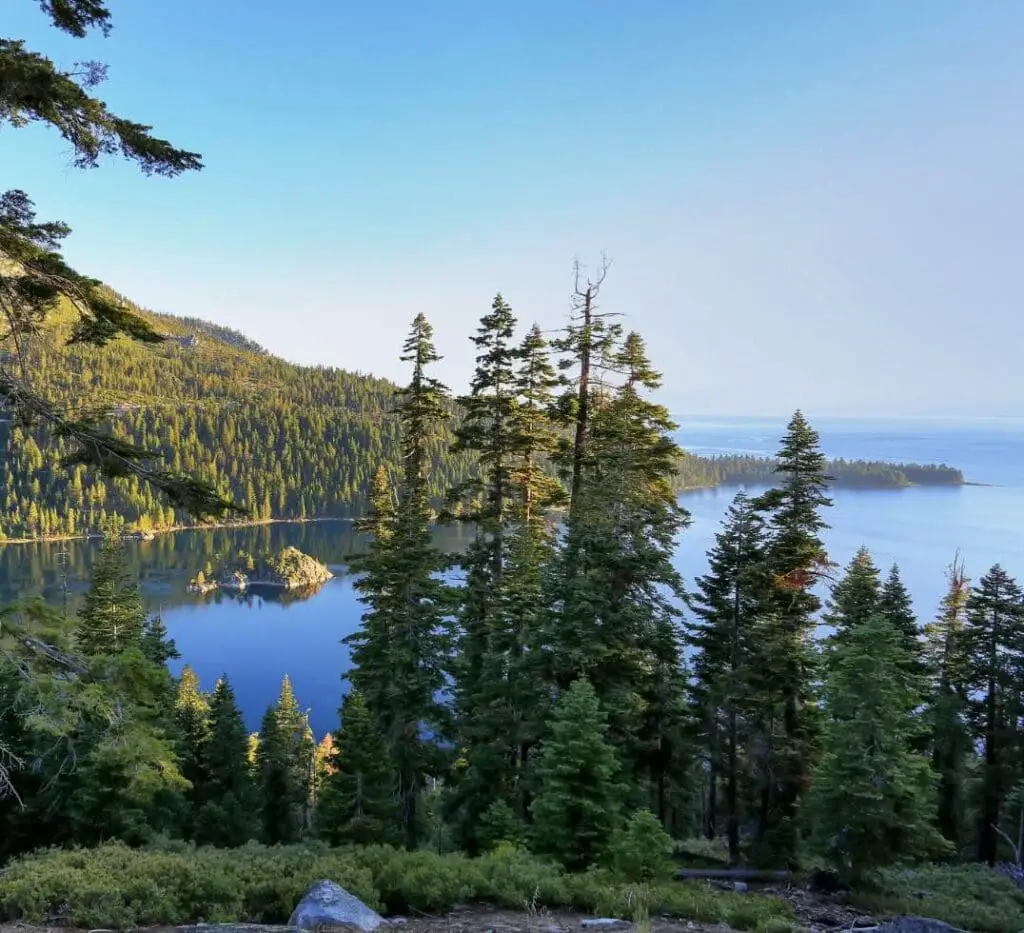
From any vantage point, the significance of the California Pine tree cannot be overstated. As critical ecosystems supporting diverse wildlife, regulators of the water cycle, and large-scale carbon sequestration agents, their ecological contributions are vast.
Yet, they stand challenged by threats like the effects of climate change, diseases, and pests. Conserving these magnificent trees requires concerted efforts and sustainable practices.
Beyond the ecological, these trees knit into human society’s social and economic fabric, providing timber, driving tourism, and bearing cultural and symbolic importance amongst the natives.
The California Pine trees are a testament to the intricate, interconnected tapestry of life that characterizes our planet – a tapestry we are all a part of and, therefore, must strive to preserve.
If you are interested in seeing how Mondoro can be a valuable partner for you for wood furniture products – we would love to talk to you to see how we can help you.
Find out more about how Mondoro can help you create, develop, and manufacture excellent home decor and furniture products – don’t hesitate to contact me, Anita. Check out my email by clicking here or become a part of our community and join our newsletter by clicking here.
Mondoro gives out a FREE Lookbook to anyone interested. You can receive a copy of our latest Lookbook by clicking here.
Listen to our Podcast called Global Trade Gal. You can find it on all major podcast platforms. Try out listening to one of our podcasts by clicking here.
Subscribe to our Mondoro Company Limited YouTube Channel with great videos and information by clicking here.
Related Content
The Beauty Of The Weeping Pine Tree: Symbolism And Meaning
The Weeping Pine Tree with its graceful branches cascading downwards, the weeping pine tree carries a unique symbolism that resonates across cultures and throughout history.
You can discover more by reading The Beauty Of The Weeping Pine Tree: Symbolism And Meaning by clicking here.
Guide To The Scientific Name Of The Pine Tree
The scientific name of Pinewood is Pinus; the name Pinus is from a Latin word. Pine wood is found worldwide with over 120 species; the United States has over 90 species of pine wood. Pine wood is an important wood for the world’s ecosystems. It continues to be a popular wood for furniture and other production.
By clicking here, you can learn more by reading Guide To The Scientific Name Of The Pine Tree.
What Is Solid Pine Wood?
Solid pine wood is 100% wood; if you cut through the wood, you would see no hallow spaces, MDF, or engineered wood used. The solid pine wood would be made from 100% lumber cut down from the pine tree.
You can learn more by reading our blog What Is Solid Pine Wood? by clicking here.

